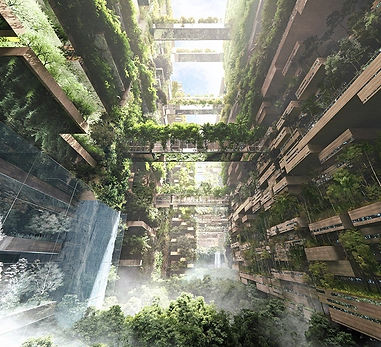
The line: city of the future
South Arabia has the 18th largest economy in the world and it has the 2nd largest oil reserve on our planet. Even if the oil industry is the strength of the country, it is recognised that there is a risk of this dependence, reason why the government has decided to diversify its economy by investing in future technology and renewable resources. In fact a revolution in civilization is taking place; Prince of Saudi Arabia Mohammed Bin Salman, last January, announced the new project of Neom, a place for commerce and communities to thrive.
Neom will be in the Tabuk province of Saudi Arabia located between the gulf of Aqaba and the red sea connected thanks to the Tiran strait opposite to Sharm El Sheikh. Neom should be a free trade zone with its own tax system and legal system. The project includes the construction of Neom Bay, the royal complex, a bridge that connects the coast of Africa to the Saudi Arabian one and the new city of the Line.

The Line is a futuristic city that should be built by 2030 and that extends throughout the coast, desert and mountains for 170 km. It will be wide 200 m and tall 500 m and will be completely covered by mirrors on the outside in order to not contaminate the environment. It will be developed in 3 dimensions with 2 main buildings connected by bridges and divided into communities. Each community is organized to provide equitable views, offer a wealth of amenities and immediate access to the surrounding nature. The city won't have regular cars and roads, because it is designed to be completely carbon dioxide free and will use only 100% renewable and sustainable resources.
People will travel thanks to a high velocity network of underground trains that will allow them to go from one end to the other of the city in less than 20 minutes. The Line will be built in 3 levels, level 1 or the ground level will be completely pedestrian without any roads but just parks, level 2 also known as service level hosting commercial space and level 3, the spine, used as the layer that connects the 2 ends of the city thanks to public transports.

The project should extend for an area of 34 km cubic and should be able to host over 9 million of inhabitants creating over 380.000 work places until 2030. According to the Prince the city will also have a 300 m tall stadium, a tourist yacht harbor and vertical gardens accessible from each building in less than 2 minutes. There won’t be costs such as insurance of cars, cost or gasoline and 40% of the world will be accessible within 6 hours.
Even if this city delivers new wonders for the world thanks to the creation of an ideal microclima with the perfect balance of sunlight and shadow some people seem to oppose to the project such as the Al-Huwaitat tribe that requested for a UN investigation cause they are forced to move from those areas in order to enable the construction.
The Line isn’t the first concept of a city like this, in fact the Spanish city planner Arturo Soria y Mata created a similar model in the 1880s used in some Russian countries and in the capital of Brazil Brasilia. The final forecast for the project is 500 billion dollars, and it should be concluded by 2030.
But will this project truly have success? Only time will tell us.
-gennaio 2023-